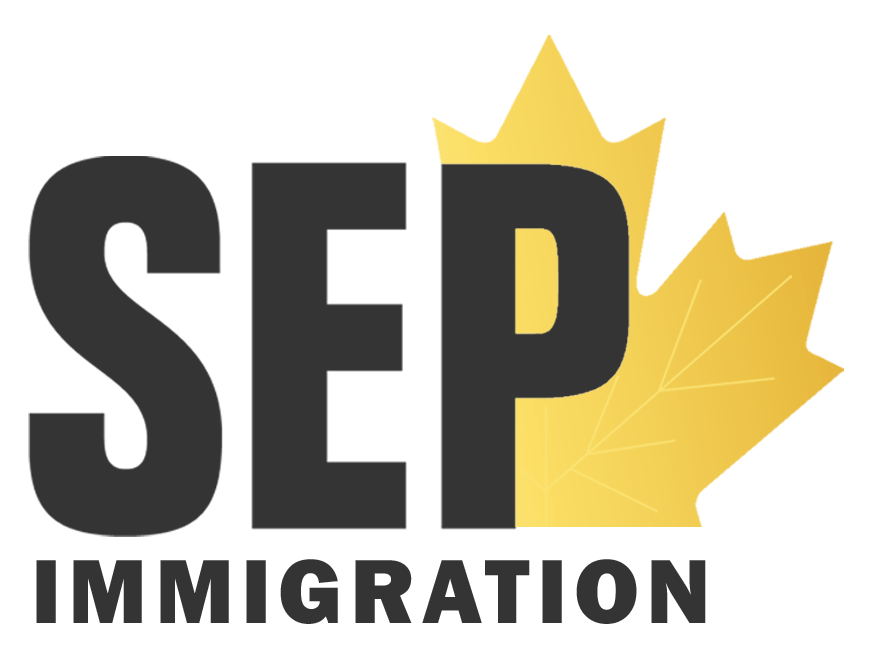How to Immigrate to Canada
Canada offers a variety of immigration pathways, making it one of the most accessible countries for those looking to start a new life. There are several options, each catering to different groups, whether you’re a skilled worker, caregiver, family member of a Canadian citizen, or a refugee seeking safety.
Some of the most common immigration programs include Express Entry, the Provincial Nominee Program (PNP), Family Sponsorship, Caregiver Visas, and Refugee Programs. Each of these routes has its own set of requirements, but they all aim to help people find a new home in Canada, whether for work, family reunification, or seeking refuge.
Express Entry
Express Entry is Canada’s most popular and fastest immigration pathway, designed for skilled workers. It operates under a point-based system called the Comprehensive Ranking System (CRS), which ranks candidates based on their education, work experience, age, and language proficiency. There are three streams under Express Entry: the Federal Skilled Worker Program (FSWP), the Canadian Experience Class (CEC), and the Federal Skilled Trades Program (FSTP).
For the FSWP, candidates need to have at least one year of skilled work experience in a TEER 0, 1, 2, or 3 job, meet minimum language requirements, and have their foreign education assessed by an Educational Credential Assessment (ECA). The CEC is for those who have gained work experience in Canada under a temporary work permit, while the FSTP is for individuals qualified in a skilled trade.
Once a profile is submitted, candidates are placed in a pool and ranked according to their CRS score. Those with the highest scores receive Invitations to Apply (ITA) for permanent residency. On August 27, 2024, Canada issued 3,300 ITAs with a CRS cut-off score of 507, showing the competitiveness of this immigration stream.
Caregivers Visa
Canada’s Caregiver Visa allows individuals to apply for work permits as home child care providers (NOC 44100) or home support workers (NOC 44101) under the Temporary Foreign Worker Program (TFWP). Caregivers are required to have a valid job offer backed by a positive Labour Market Impact Assessment (LMIA), which ensures that no Canadians are available to fill the job.
One of the key benefits of the Caregiver Visa is that it allows for faster processing for those already working in Canada under a valid permit. Applicants must also meet minimum language requirements and have relevant work experience. Additionally, the visa provides a direct path to permanent residency, making it an attractive option for those seeking long-term settlement in Canada.
In 2024, the government introduced several enhancements to the Caregiver Program, including allowing caregivers to work for multiple employers and expanding opportunities for those who assist semi-independent individuals or those recovering from illnesses.
Rural And Northern Program
The Rural and Northern Immigration Pilot (RNIP) helps attract skilled workers to smaller communities in Canada. Since rural areas face economic and demographic challenges, this program is vital in promoting economic development. It allows foreign workers to apply for permanent residency while living and working in designated rural regions.
Communities such as West Kootenay, British Columbia have seen substantial growth through RNIP. In 2023, over 550 newcomers applied for permanent residency, and more than 140 employers used the program to fill job vacancies. The program is currently available in 11 communities across Canada, including North Bay, Thunder Bay, Sudbury, and Moose Jaw.
RNIP has been so successful that there are plans to make it a permanent program and to launch two new pilots to expand its reach. The government’s goal is to continue addressing labor shortages and foster long-term economic growth in rural areas through skilled immigration.
Refugees
Canada continues to be a global leader in refugee protection, providing asylum for those fleeing persecution, war, and violence. In 2023, Canada processed over 140,000 refugee claims, making it one of the top countries for refugee intake. The process ensures that all applications are treated fairly and in accordance with Canadian law, giving applicants the opportunity to present their case.
Once accepted as a refugee, individuals can apply for permanent residency, granting them the ability to live and work in Canada long-term. Canada also runs resettlement programs for refugees, where individuals can be sponsored either by the government or private organizations, making their transition into Canadian society smoother.
Immigration Appeals
Immigration decisions are not always final, and applicants have the right to appeal if their application is rejected. Canada offers an appeals process where applicants can challenge the decision, either through the Immigration Appeal Division (IAD) or by applying for a Judicial Review at the Federal Court. In 2024, nearly 1,800 appeals were filed, and over 500 were approved.
Appeals can be filed within 15 days if the decision was made inside Canada, and within 60 days if made outside. The process allows for errors or omissions in the application to be corrected, giving applicants another chance to present their case for approval.
The Fastest Way to Immigrate to Canada
When it comes to speed, Express Entry is the fastest route to immigrate to Canada. On average, the processing time for Express Entry applications is around six months from the time an Invitation to Apply (ITA) is issued. This makes it the quickest option compared to other programs such as family sponsorship or Provincial Nominee Programs. Candidates with high CRS scores, particularly those applying through the Canadian Experience Class (CEC) or Federal Skilled Worker (FSW) streams, are often invited to apply first.
Easiest Entry to Canada
The easiest way to immigrate to Canada depends on your personal circumstances. Family sponsorship is one of the most straightforward ways if you have a spouse, parent, or child who is a Canadian citizen or permanent resident. The Provincial Nominee Program (PNP) can also be an easier path for individuals with ties to specific provinces. This program allows provinces to select candidates who meet their local labor market needs.
For those with job offers from Canadian employers, the LMIA Work Route is another relatively easy path to get temporary work permits and later transition to permanent residency. Additionally, business immigration programs offer opportunities for entrepreneurs and investors to move to Canada if they meet the financial and business experience requirements.
Requirements to Immigrate to Canada
When applying for Canadian immigration, applicants are evaluated based on several key factors. Below are the general requirements for most immigration programs:
Age
Age is an important factor in Express Entry, with younger applicants receiving more points. Typically, candidates aged between 18 and 35 score higher on the CRS.
Language Ability
Proficiency in English or French is crucial. Applicants must take approved language tests such as IELTS (for English) or TEF (for French). Strong language skills can significantly improve an applicant’s score in Express Entry.
Education
Applicants need to have a degree, diploma, or certificate from a recognized educational institution. For foreign qualifications, an Educational Credential Assessment (ECA) is required to prove that the education is equivalent to Canadian standards.
Work Experience
Relevant skilled work experience is essential. Most programs require at least one year of full-time work experience in a skilled job (TEER categories 0, 1, 2, or 3).
Proof of Funds
Applicants must demonstrate that they have enough financial resources to support themselves and their families after arriving in Canada. This is mandatory unless the applicant has a valid job offer.
Job Offer
While a job offer isn’t always necessary, it can greatly improve your chances in programs like Express Entry and the Provincial Nominee Program. The offer must come from a Canadian employer, and in some cases, it requires a positive LMIA.
The Cost of Immigration to Canada
The cost of immigrating to Canada varies based on the immigration program you choose and the number of family members applying. Below is a breakdown of typical costs:
Express Entry
- Application Fees:
The main applicant must pay CAD 1,525, which includes the processing fee (CAD 950) and the right of permanent residence fee (CAD 575). Additional fees apply for a spouse (CAD 1,525) and children (CAD 260 each). - Proof of Funds:
Applicants must show proof of funds, which varies depending on the family size. For a single person, the minimum amount is CAD 13,757, while a family of four needs CAD 25,564.
Caregivers Visa
- Application Fees:
Caregivers applying for permanent residency through the Home Child Care Provider or Home Support Worker streams must pay CAD 1,210. This includes the processing fee and the right of permanent residence fee.
Rural and Northern Immigration Program
- Application Fees:
The fees are similar to Express Entry, with CAD 1,525 for the main applicant, plus additional costs for dependents.
What is the First Step for Immigrating to Canada?
The first step to immigrating to Canada is determining your eligibility for various immigration programs. This can be done using online tools available on the official Canadian immigration website. After that, gather essential documents like your passport, proof of education, language test results, and proof of funds. Once your documents are ready, you can create an Express Entry profile or apply directly to the program you qualify for.
Thinking about making Canada your new home? At SEP Immigration, we’re here to help. Whether you’re applying through Express Entry, the Caregiver Visa, or another immigration path, our team is ready to guide you every step of the way. Reach out to us today, and let’s make your immigration journey as smooth as possible.
FAQ
Is Canada Still Accepting Immigrants?
Yes, Canada continues to accept immigrants. In fact, the government has announced plans to welcome over 500,000 new permanent residents annually by 2025, across various immigration streams such as Express Entry, PNP, and family sponsorship.
What Is the New Policy for Canadian Immigration?
Canada’s 2024 immigration policy focuses on increasing the intake of skilled workers to fill labor shortages in various industries. Express Entry and Provincial Nominee Programs continue to prioritize economic growth and workforce needs.
What Is the New Immigration Plan for 2024?
Canada’s Immigration Levels Plan for 2024-2026 aims to welcome over 1.45 million new permanent residents by 2026. The focus is on increasing the intake of skilled workers and enhancing family reunification efforts through various immigration pathways.









